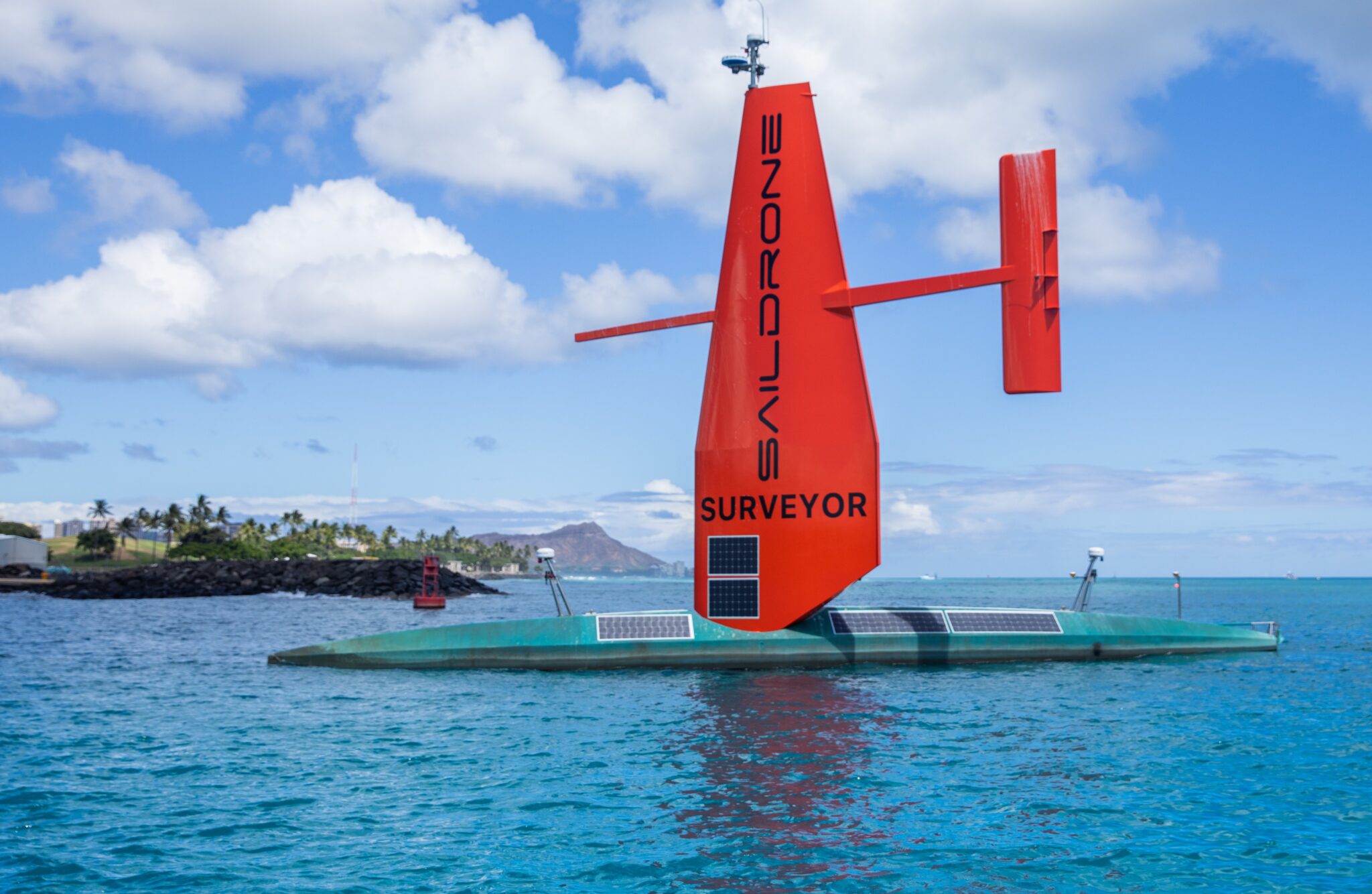
[ad_1]

Saildrone is making a splash in autonomous oceanic monitoring.
The startup’s nautical information assortment expertise has tracked hurricanes up shut within the North Atlantic, found a 3,200-foot underwater mountain within the Pacific Ocean and begun to assist map everything of the world’s ocean flooring.
Primarily based within the San Francisco Bay Space, the corporate develops autonomous uncrewed floor autos (USVs) that carry a variety of sensors. Its information streams are processed on NVIDIA Jetson modules for AI on the edge and are being optimized in prototypes with the NVIDIA DeepStream software program growth package for clever video analytics.
Saildrone is searching for to make ocean intelligence assortment cost-effective, providing data-gathering techniques for science, fisheries, climate forecasting, ocean mapping and maritime safety.
It has three totally different USVs, and its Mission Portal management heart service is used for monitoring personalized missions and visualizing information in close to actual time. Additionally, a few of Saildrone’s historic information is freely obtainable to the general public.
“We’ve sailed into three main hurricanes, and proper by means of the attention of Hurricane Sam, and all of the autos got here out the opposite facet — they’re fairly strong platforms,” stated Blythe Towal, vp of software program engineering at Saildrone, referring to a robust cyclone that threatened Bermuda in 2021 .
Saildrone, based in 2012, has raised $190 million in funding. The startup is a member of NVIDIA Inception, a program that gives corporations with expertise assist and AI platforms steerage.
Conserving an AI on Earth’s Waters
Saildrone is using a wave of curiosity to be used of its crewless information assortment missions in environmental research of oceans and lakes.
The College of Hawaii at Manoa has enlisted the assistance of three 23-foot Saildrone Explorer USVs to review the impression of ocean acidification on local weather change. The six-month mission across the islands of Hawaii, Maui, Oahu and Kaui shall be used to assist consider the ocean’s well being across the state.
Ocean acidification is a discount in its pH, and contributing components embody the burning of fossil fuels and farming. These can have an effect on coral, oysters, clams, sea urchins and calcareous plankton, which might threaten marine ecosystems.
Saildrone not too long ago partnered with Seabed 2030 to fully map the world’s oceans. Seabed 2030 is a collaboration between the Nippon Basis and the Common Bathymetric Chart of the Oceans, or GEBCO, to map ocean flooring worldwide by 2030.
“Saildrone’s imaginative and prescient is of a wholesome ocean and a sustainable planet,” stated Saildrone founder and CEO Richard Jenkins. “An entire map of the ocean flooring is key to attaining that imaginative and prescient.”
The scientific neighborhood worldwide is embracing NVIDIA AI for local weather research, together with for hyper-local local weather modeling, AI to enhance sequestering carbon, renewable vitality analysis and many different areas. Dedicating its personal experience, NVIDIA is creating the world’s strongest AI supercomputer for predicting local weather change, named Earth-2, which shall be used to create a digital twin of Earth in Omniverse.
Power-Environment friendly Information Processing
Saildrone USVs allow researchers to gather extra information utilizing fewer sources than conventional boats and crews, conserving vitality and holding crews out of hazard.
The USVs are constructed for harsh climate and lengthy missions. One among its USVs not too long ago accomplished a 370-day voyage monitoring carbon dioxide, crusing from Rhode Island throughout the North Atlantic to Cabo Verde, right down to the equator off the west coast of Africa, and again to Florida.
Working totally on photo voltaic and wind energy requires energy-efficient computing to deal with a lot information processing.
“With solar energy, with the ability to hold our compute load energy effectivity decrease than a typical computing platform operating GPUs by implementing NVIDIA Jetson is necessary for enabling us to do these sorts of missions,” stated Towal.
Oceanic Surveying Meets Edge AI
Saildrone depends on the NVIDIA JetPack SDK for entry to a full growth setting for hardware-accelerated edge AI on the Jetson platform. It runs machine studying on the module for image-based vessel detection to help navigation.
Saildrone pilots set waypoints and optimize the routes utilizing metocean information — which incorporates meteorological and oceanographic data — returned from the automobile. The entire USVs are monitored across the clock, and operators can change course remotely through the cloud if wanted.
Machine studying is usually run domestically on the Jetson module— however can run on the cloud as effectively with a satellite tv for pc connection — as a result of bandwidth could be restricted and expensive to shuttle from its strong suite of sensors producing high-resolution imagery.
The USVs have oceanographic sensors for measurement of wind, temperature, salinity and dissolved carbon. The corporate additionally permits analysis of ocean and lake flooring with bathymetric sensors, together with deep sonar mapping with single- or multi-beam for going deeper or wider. And its perceptual sensor suite consists of radar and visible underwater acoustic sensors.
DeepStream Goes Deep Sea
Saildrone faucets into the NVIDIA DeepStream SDK for its imaginative and prescient AI purposes and companies. Builders can construct seamless streaming pipelines for AI-based video, audio and picture analytics utilizing the package.
Providing a 10x throughput enchancment, DeepStream could be utilized from edge to cloud to develop optimized clever video purposes that deal with a number of video, picture and audio streams.
Saildrone will depend on DeepStream for picture preprocessing and mannequin inference, which permits machine studying on the edge, even at sea whereas powered by solar and wind.
Study extra about NVIDIA Jetson modules and the DeepStream SDK.
[ad_2]